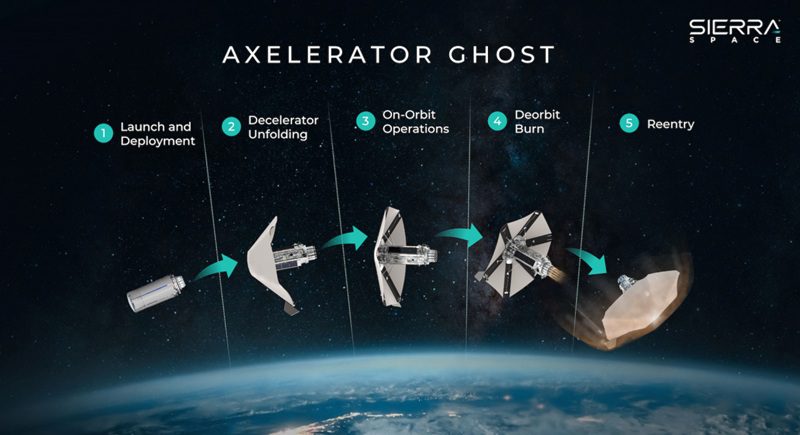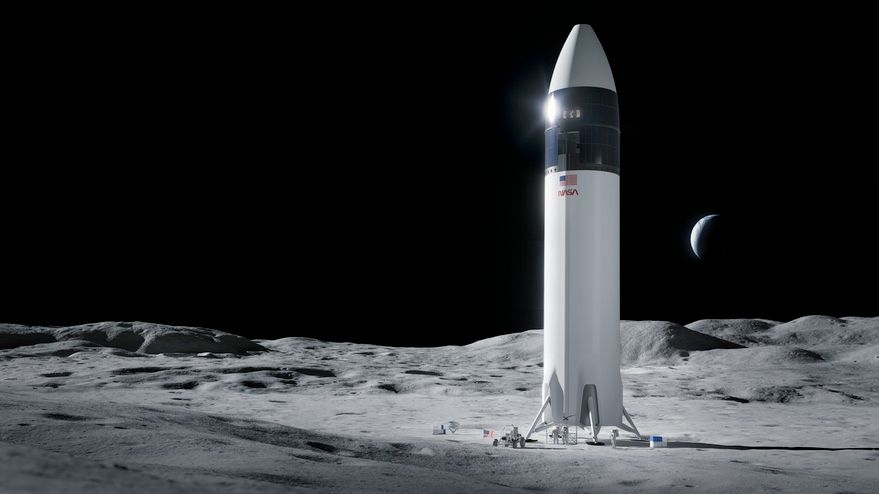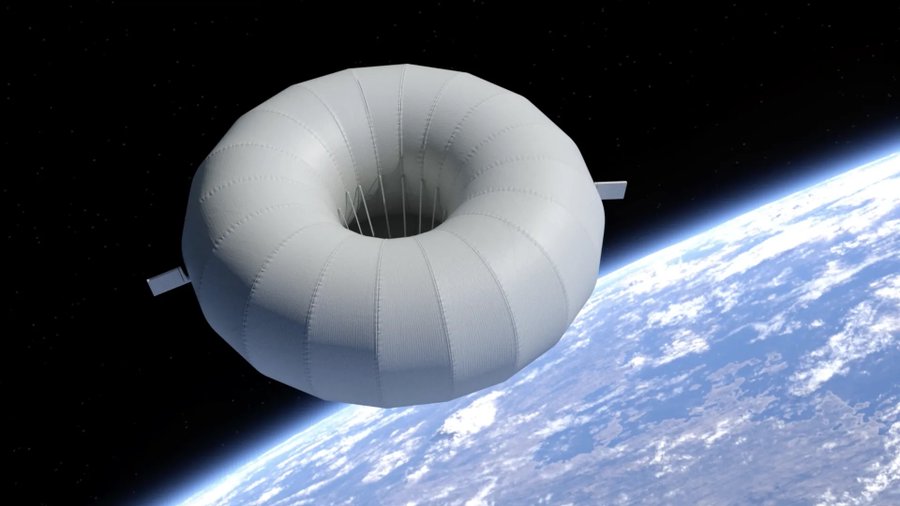At the International Astronautical Congress (IAC 2016) in Guadalajara, Mexico, Elon Musk, the billionaire founder and Chief Technical Officer of the launch provider and manufacturer SpaceX, revealed his plan to put mankind onto the planet Mars, in effect becoming THE direct competitor to NASA in the race to the red planet.
In a fascinating presentation, delivered in his normal relaxed style, he detailed the design of a new massive launch vehicle and new interplanetary space-liner, which he hopes will deliver the 100 passengers and crew into an initial low Earth orbit, and then provide up to five refuelling flights to this space-liner before it is sent on its way to Mars.
The details of the rocket and space-liner are mind-boggling. The 12m-diameter rocket will launch the 17m-diameter Mars transfer and landing space-liner of 300 metric tons into an initial low Earth orbit (LEO). The rocket’s massive first stage employs a reusable first stage powered by 42 liquid oxygen/methane burning Raptor engines, each with 738,000lb thrust (3,285kN), and which use a full flow staged combustion cycle.
The propellants are deeply cryogenically cooled for even more efficiency. The first stage will have a combined thrust of 128MN at lift-off (138MN in vacuum). If used in an expendable mode, the SpaceX Mars rocket is capable of carrying 550 metric tons into low Earth orbit. The overall height of the rocket-spacecraft stack is 122m. All the tankage is autogenously pressurised from the propellants in the tanks.
“It’s quite big,” said Musk in a jestful understatement. For comparison, the Apollo-era Saturn V could carry 118 metric tons to LEO, while NASA’s SLS heavy lift rocket, even in its final Block 2 version, will only be able to carry 130-165 metric tons.
The 49m space ship/space liner acts as the second stage using nine of its own Raptor engines, six of which are vacuum optimised while three are gimballed to provide steering and control during landing.
After a short period of refuelling, the space-liner (once dubbed Mars Colonial Transporter) will make its journey to the planet. The refuelling will take place using a similar tanker craft sent to the space liner with up to five refuelling flights taking place “over weeks” rather than months. After the 120-day journey, which may later be reduced in time, the space-liner transporter will make a planetary atmospheric entry and vertical landing. Follow on flights would be timed with the Earth-Mars opposition cycle.
A prepositioned in-situ plant will refuel the space-liner craft, ready for its return. Musk said he expected that a ticket to the planet would cost circa US$200,000, about the median current value of a house in the USA. SpaceX is aiming for a first manned flight to Mars in 2024 with unmanned flights made two years before. Musk admitted that this might be an optimistic timeline.
Elon Musk said that it would take an estimated US$10 billion to complete the project. While earlier noting the need for a “public/private partnership”, Musk shied away from saying that NASA should give up on its own Mars effort in favour of funding his, saying that the more Mars “irons in the fire”, the better.
NASA gets defensive over SLS but Musk’s Mars rocket has too many engines for some
NASA is becoming increasingly defensive over its SLS rocket, which critics cite as being overly expensive to develop, but undersized and flying too infrequently to be of real use for Mars missions.
Having previously stated that he was not a fan of commercially developed heavy lift rockets, at IAC 2016 NASA Administrator Charles Bolden was instead keen to emphasise progress with NASA’s new rocket, which could also find use in launching large long-range unmanned probes.
SLS does not just have SpaceX’s rocket to contend with. At IAC 2016 Guadalajara, Blue Origin, revealed not only that it was developing its New Glenn rocket line, but also working on an even larger New Armstrong super-heavy lift launch vehicle for longer range exploration use. While declining to give details of its payload capacity, it is thought to be in excess of the SLS Block 2.
With respect to the SLS, Steve Creech, NASA’s SLS Programme manager, confirmed that the most powerful Block 2 version would not be ready until the late 2020s at the earliest. This has resulted in the choice of advanced booster being delayed indefinitely, with NASA funding being concentrated on the Exploration Upper Stage (EUS) and other exploration hardware.
Andy Crocker, SLS Engine Programme manager at Dynetics, which is competing with its F-1B engine liquid fuel booster design (Orbital ATK is the other contender for the Advanced Booster with a solid rocket design), was hopeful that this would happen sooner. “At some stage they [NASA] will need a more powerful rocket,” he said.
In the meantime, his firm was concentrating (using US Air Force funding) on developing a 500,000lb thrust (2,224kN) engine deploying a more advanced Oxygen Rich Staged Combustion (ORSC) cycle engine, in conjunction with Aerojet Rocketdyne. Although it could theoretically be used for the SLS Advanced Booster – six of these engines would be needed for each booster instead of, under current plans, two 1.8 million lb thrust (8,000kN) F-1Bs – this engine would mainly be used on other launch vehicles.
If it is employed for the SLS booster, this would increase the number of SLS launch engines to 20 (two six-engine boosters, plus four RS-25s on the core stage), although this would still be considerably less that the 42 first-stage engines to be used by the SpaceX Mars rocket.
When asked to comment on the number of engines on SpaceX’s design, Creech said: “That’s a lot of engines.” Crocker was even clearer. He called the overall SpaceX plan “audacious” but thought that the number of first-stage engines was “kind of crazy” before adding “we will have to see how they do with the 27 engine Falcon Heavy”.
The SpaceX Mars rocket has a concentric engine configuration similar to the Soviet Union’s N-1 Moon rocket, which had a 30-engine first stage. SpaceX intends to have most of its 42 engines “fixed”, with only the central cluster of seven engines “steerable” via gimballing.
The omens for the configuration with such a large number of engines are not good. The N-1 never flew successfully.
Composite tankage and fast refuelling impresses others
SpaceX’s Mars rocket design will be entirely composite. While the structural weight gain over using aluminium lithium structures is relatively small, it all adds to improving the performance of the rocket. There are, however, downsides to the technology.
While high cycle pressurisation/depressurisation fatigue in metal tanks is well understood, such catastrophic failures in composite structures are much less easy to predict and prevent. Nevertheless, engineers in the audience were impressed with the fact that SpaceX had already produced and tested a very large composite propellant tank.
Doubts remain about the efficiency and ease of in-situ propellant production from the Martian atmosphere for the Mars spaceliner’s return.
Spaceflight experts were, however, impressed at the speed of Musk’s plan to rapidly refuel the craft at the start of the mission from Earth, which would avoid the boil-off issues that would beset the project using less frequent refuelling. The low flight rate of the SLS which launches at a maximum rate of twice per year has been criticised for this reason.
Some critics pointed out that with 100 people aboard, the volume per passenger would be much less than the 20 cubic metres that is traditionally accepted as the comfortable norm for astronauts on long-range missions. There were also concerns about how Musk would adequately protect his craft and occupants from solar and cosmic radiation. The spacecraft’s water supply is expected to be used for this. Musk also mentioned orientating the engines and structure to maximise the solar radiation barrier.
Does Musk want to be first human on the planet Mars?
When asked if he wanted to be the first man on Mars, Musk effectively said he would but would also like to see his kids again. The dangers of the first manned mission were further noted by Musk when he said he would need a succession strategy in place to make sure that his Mars colonial vision would survive any more pressing corporate profit motivation.
While 42 might be the number of engines on his new rocket, and of course has “universal significance” in Douglas Adam’s “The Hitchhiker’s Guide to the Galaxy”, Musk said that he also wanted to name his new spaceship “Heart of Gold” after the fictional spaceship with its infinite improbability drive.
Sympathy for the Lockheed Martin Mars plan after Musk spectacular
There was some sympathy for Lockheed Martin at the IAC 2016 Guadalajara. It presented a well thought out, but much smaller scale (probably a four man crew) plan to begin Mars exploration, starting with a small space station in cis-lunar space. This would be used to conduct a mission to the Martian moons, Phobos and Deimos, in 2028. Special “moon-walking” technology would have to be employed for astronauts to walk around in a very low gravity environment. Lockheed Martin’s Mars-orbiting outpost would also remotely control unmanned aircraft and rovers on the Martian surface before an eventual manned landing some years after that.
The mission plan is very similar to one from Boeing described in technical papers at IAC 2016 and is thought to chime very closely with NASA’s own thoughts on the mission.
Nevertheless, impressive as it was, after Musk’s Mars space liner spectacular which, in effect, was a “Kennedy-class” announcement about human interplanetary exploration, the Lockheed Martin mission architecture felt more like a motorboat trip to Bognor Regis on England’s south coast. And without even a shore landing.
So will Musk make it?
Doubts remain over Musk’s mission plan, especially over the number of first-stage engines to be employed by his rocket, the employment of composite tankage, and over his space liner’s radiation protection, or lack thereof.
And, of course, just as the early ocean liners found, there are always unforeseen elements that can also threaten a mission. The Titanic was sunk by an iceberg, so Musk will be hoping that there are none of those around.
While Musk foresees a Martian colony of over a million souls, there are also doubts about exactly how many people would actually want to become colonists on the barren wasteland that is Mars. If you want one of these, there is, after all, the Gobi Desert back on Earth.
Still it could happen. The city of Las Vegas has, after all, managed to grow up in the middle of a desert in Nevada where it should not really be. As such, Musk is similarly gambling that his Mars colony will do the same.
Conclusion: it is an audacious plan which even the experts are rooting for
In spite of all the doubts, the Musk’s Mars landing and colonisation plan has made even the most sceptical of the space experts excited by its audacity. Something that has been sadly missing in NASA’s own exploration plans.






